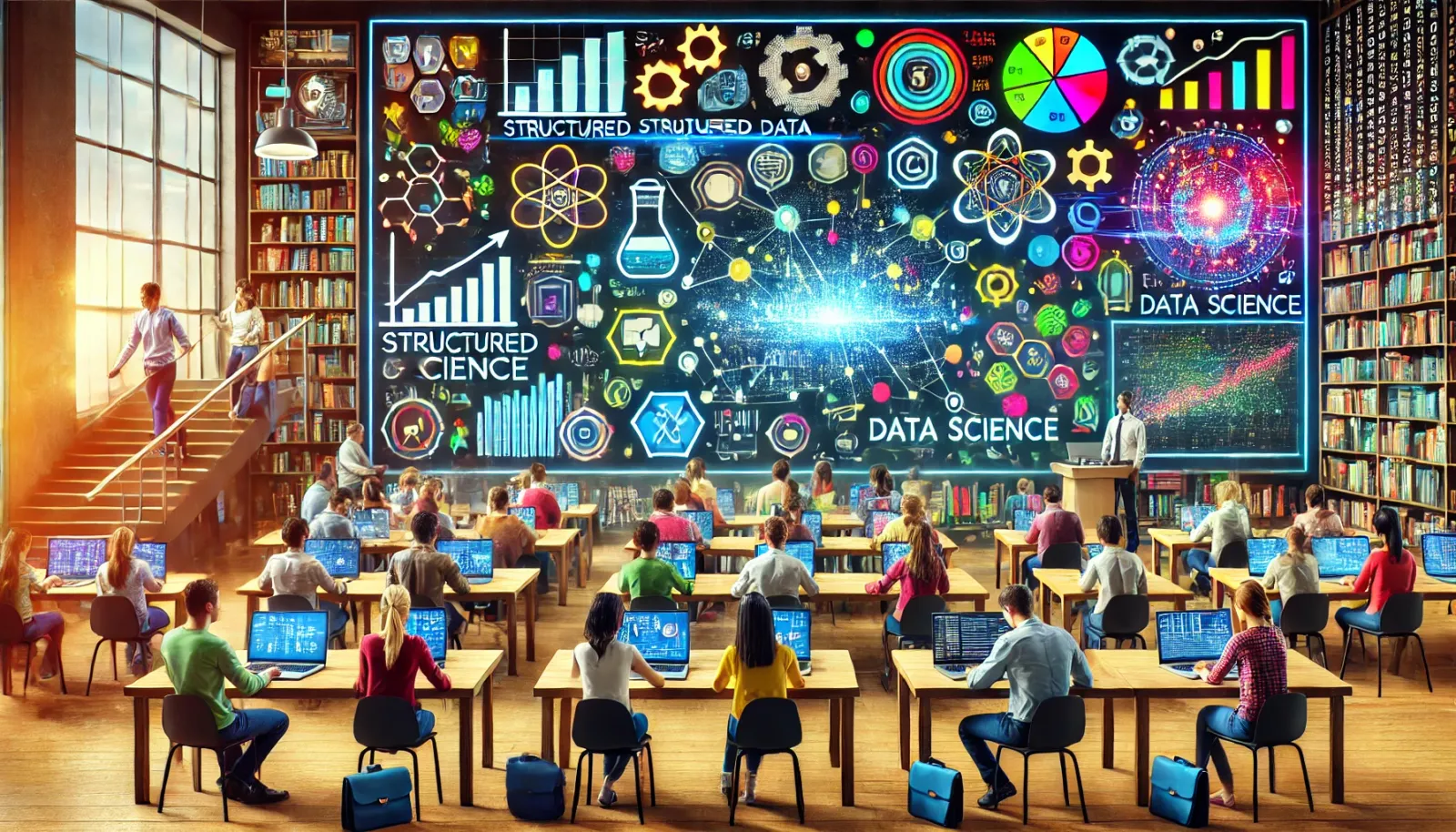📊1.2 Key Concepts of Data Science

Data Science is a vast and dynamic field that integrates several disciplines to extract meaningful insights from data. In this section, we will explore the key concepts that form the foundation of Data Science.
🔍 1.2.1 Data
At the heart of Data Science is data itself. Data can be structured (like in databases), semi-structured (like JSON files), or unstructured (like text and images). It serves as the raw material that Data Scientists analyze to find patterns and insights.
- Structured Data: Organized in rows and columns, often found in relational databases (e.g., spreadsheets, SQL databases).
- Unstructured Data: Lacks a predefined format, including text, images, and videos (e.g., social media posts, emails).
- Semi-Structured Data: Falls between structured and unstructured, such as JSON, XML files.
🧠 1.2.2 Data Processing
Data Processing involves cleaning, transforming, and organizing data into a usable format. This step is crucial as raw data often contains errors, missing values, or irrelevant information.
- Data Cleaning: Removing or correcting data anomalies, such as missing values or duplicates.
- Data Transformation: Converting data into a suitable format, like normalizing numerical values or encoding categorical variables.
- Data Integration: Combining data from different sources to create a cohesive dataset.
📈 1.2.3 Data Analysis
Data Analysis is the core activity in Data Science. It involves applying statistical and computational techniques to explore and interpret data.
- Descriptive Analysis: Summarizes data to understand its structure (e.g., mean, median, mode).
- Inferential Analysis: Makes predictions or inferences about a population based on a sample (e.g., hypothesis testing).
- Exploratory Data Analysis (EDA): A process of analyzing data sets to summarize their main characteristics, often using visual methods.
🤖 1.2.4 Machine Learning
Machine Learning (ML) is a subset of Artificial Intelligence (AI) that enables computers to learn from data without being explicitly programmed. It's a key technique in Data Science for making predictions and identifying patterns.
- Supervised Learning: Models are trained on labeled data (e.g., classification, regression).
- Unsupervised Learning: Models find hidden patterns in unlabeled data (e.g., clustering, dimensionality reduction).
- Reinforcement Learning: Models learn by receiving rewards or penalties (e.g., game playing, robotics).
🛠️ 1.2.5 Tools and Technologies
Data Scientists use a variety of tools and technologies to handle data, build models, and visualize results. Some of the most common tools include:
- Programming Languages: Python, R, SQL.
- Data Visualization: Matplotlib, Seaborn, Tableau.
- Big Data Technologies: Hadoop, Spark.
- Machine Learning Frameworks: TensorFlow, Scikit-learn, PyTorch.
📊 1.2.6 Data Visualization
Data Visualization involves representing data graphically to help people understand its significance. Visualization tools allow Data Scientists to present complex data in a more accessible and interpretable way.
- Bar Charts: Show comparisons among discrete categories.
- Line Charts: Track changes over time.
- Scatter Plots: Reveal relationships between variables.
📊 1.2.7 Ethical Considerations
Ethics play a crucial role in Data Science. Data Scientists must ensure that data is used responsibly and ethically, particularly when dealing with personal or sensitive information.
- Privacy: Ensuring individuals' data is protected and not misused.
- Bias: Avoiding algorithmic bias that can lead to unfair outcomes.
- Transparency: Being open about data sources, methods, and intentions.
🎁Resource:
- Introduction to Data Science - Coursera : A foundational course on Data Science that covers the key concepts, tools, and techniques.
- Structured vs Unstructured Data - Datamation: An article explaining the differences between structured, semi-structured, and unstructured data.
- The Data Cleaning Process - Towards Data Science: A comprehensive guide to data cleaning, including techniques and best practices.
- Exploratory Data Analysis (EDA) Techniques - Analytics Vidhya : A detailed article on Exploratory Data Analysis (EDA) techniques and their importance in data science.
- Understanding Machine Learning - IBM : A resource that provides an overview of machine learning, including its types and applications.
- Data Visualization Best Practices - Tableau : A guide to effective data visualization techniques and best practices.
- Data Science Tools and Technologies - DataCamp : An overview of essential tools and technologies used in Data Science, including libraries and frameworks.
- Ethics in Data Science - UC Berkeley School of Information : An article discussing the ethical considerations in Data Science, including privacy, bias, and transparency.
- The Role of Inferential Statistics in Data Science - Khan Academy : A lesson on inferential statistics and its application in Data Science.
- Data Science and Big Data Analytics - edX : A course that covers the fundamentals of data science and big data analytics.